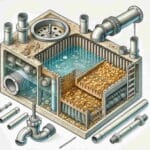Four Simple Tips to Consider Before Your Next Gold Bar Purchase
We all understand the importance of investing money in high-value risk-free assets, and we all aim to receive consistent growth in such value. Unfortunately, the value of assets fluctuates due to numerous market conditions both in the country and worldwide. An investment in assets can either stabilize your income or ruin your savings.
However, there is one such asset that is not only a valuable investment but also has proven to rise in value consistently despite the market condition. Gold bar purchases provide you with a safe investment opportunity. It’s not completely risk-free but the volatility is less likely to impact you negatively and ruin your wealth.
However, purchasing bars of gold is more complex than it seems. With so many sellers in the industry, you are bound to get confused about your investment strategy.
Let us discuss a few tips that you should consider before your next gold bar purchase.
1. Check the purity of gold
The purity of gold is an important determinant that should be considered before you make a purchase. It is measured in Karats, with 24 karat gold being the purest form. It contains 24 parts gold with little impurities.
The widely purchased 22 karat gold contains 22 parts gold, with 2 parts of other metal. Similarly, 18 karat gold has 18 parts gold and 6 parts of other metals.
The purity of gold determines its value. Hence, you should be aware of the purity of gold bars.
2. Get the best price
Another important consideration when choosing bars of gold for sale is their price. As we discussed earlier, the purity of gold determines its price. However, different sellers may provide you with different quotes.
This is because when you purchase gold bars, you pay a premium over and above the value of the precious metal. Different retailers may charge different premiums. Also, depending on their source of gold, the price of gold itself may differ.
In most cases, the premium per ounce reduces as the weight of the gold bar increases. Hence, investing in the maximum-weight gold bars can help you save some premium on them. However, you should also keep your budget in mind so that you can hold your investment to receive the best value.
3. Check certification
There are numerous sellers in the market offering bars of gold for sale. However, it’s not uncommon to see retailers engaging in fraudulent activities and selling off fake products in the market. Hence, to ensure the safety of your investment, you need to check the certification of gold bars.
The gold bars should have hallmarks depending on the guidelines of the Federal Trade Commission and other authorities. Also, the certification should vouch for the purity, weight, authenticity, and other characteristics that impact its value.
The certification also ensures that you can resell or exchange your gold bars as and when the need arises.
4. Ask for an invoice
Any sale transaction needs an invoice to ensure its legality and authenticity. Bars of Gold for Sale is no different. Whenever you purchase gold bars, you should always ask the sellers for an invoice.
The invoice should contain a list of every item you have purchased, its quantity, and cost. Also, it should specifically mention the purity and weight of the gold bars.
The making cost, taxes, and other charges should be specifically mentioned in your bill. Having an invoice helps you in proving the ownership of gold bars in case of a dispute. Also, it is helpful at the time of resale.
These are some of the tips to help you in your next gold bar purchase. To ensure the safety of your investment, you should always purchase your gold bars from a reputed and renowned seller.
Also, a little market research can help you in mitigating risks when choosing Bars of Gold for Sale.
Hood Cleaning: What Every Restaurant Needs to Know
Every restaurant strives to create the best experience for their patrons, but it is a tough business. Margins are tight and running lean is important. Is cutting back on hood cleaning the way to go? Absolutely not. Without commercial hood cleaners performing routine and specialized maintenance, you risk the very business you are striving to protect.
Why Call in Commercial Hood Cleaners?
Fire is a major risk
Range hoods help keep grease, odors, and fumes out of the kitchen. Since grease builds up on the filters, neglecting regular maintenance from commercial hood cleaners means increasing the risk of fire. Cooking equipment is the biggest fire risk in any kitchen environment. Failure to clean the hood means failure to keep your team and your dinner guests safe. Reduce the risk of grease fires by ensuring that the kitchen hoods are kept clean and well-maintained.
Let’s Clear the Air
The hood also plays a big role in indoor air quality. A dirty hood and clogged up filters lowers the air quality for your workers, and that air can also escape into the dining room and affect your guests. Any restaurant that suffers from poor indoor air quality is not a restaurant that will stand out among its competition. Even if the food is wonderful, it is the entire experience on site – and the happiness of the team preparing the food – that make all the difference in this tough market.
Failing Inspections
Restaurant owners expect unannounced visits from food and safety inspectors – which is another reason to have commercial hood cleaners performing regular cleanings. A dirty range hood with a buildup of grease and bad odors wafting out of the kitchen will not sit well will with the inspector; any fines or closures affect more than your bottom line. They also affect your reputation.
Save Money by Planning Ahead
It costs more to re-open after a fire or forced closure than it does to ensure the kitchen hood is properly cleaned. Restaurant life is busy, so instead of letting this slip the mind, work with commercial hood cleaners that will assess how often you need regular maintenance. This will differ by restaurant type. Any place based on fast food tends to have more grease (from fries, chicken tenders, etc.). These hoods need cleaning more often than a place that does little to no frying or hot stovetop work. The right commercial hood cleaners understand that there is no “one size fits all” schedule and will, instead, take the time to get to know you, your business, and your menu and then help you set up a schedule accordingly.
What to Expect from Commercial Hood Cleaners?
Commercial hood cleaners do more than just clean the hood. Restaurant owners should expect a full service that includes the hood, plenum, duct risers, filtration system, all the filters, the grease boxes, the surrounding kitchen equipment (if connected or applicable) the exhaust fan and fan systems and the ducts connected to the system. Some cleaners will also wipe down affected kitchen equipment and wash the ceiling around the hood, too.
The Benefits of a Well-Rounded Commercial Hood Cleaning Company
The range hood is not the only area of your restaurant that should be on a regular cleaning and maintenance cycle. Save time and money by working with a well-rounded commercial hood cleaning company – one that will also address indoor air quality and has resources for air duct cleaning and maintenance, emergency services (fire, mold, biohazard cleanup and restoration) and demolition. Having one trusted, well-known team to handle all your indoor air quality, commercial hood cleaning and emergency service needs means peace of mind and a better experience for everyone on your premises.
Commercial Hood Cleaners – and So Much More…
In this day and age of the pandemic when cleanliness and indoor air quality are more important than ever, work with commercial hood cleaners that can do it all, from regular maintenance to getting your restaurant safe to reopen if a COVID case was reported on site, to helping with indoor air quality, and more. The time and effort spent on setting up the service now means savings later – for your bottom line and your restaurant’s reputation.
What Exactly is an Upcycling Collection and Why are Brands Doing It?
The current structure of the clothing industry is inefficient and unsustainable.
Textiles are estimated to produce roughly 15% of world emissions, more than transportation and airplanes combined.
The sector is essentially a conveyor belt that consumes vast quantities of resources to produce clothing that only gets worn for a brief period of time before being discarded in dumps.
Upcycling clothing is a great approach to saving waste and environmental impact.
What is an Upcycling Collection, And How Does It Work?
Upcycling isn’t a phrase coined only a few years ago. People just weren’t aware of the term or what it means. Simply put, the upcycling collection is another phrase for sustainability.
Upcycling is more than a trendy term; it encourages a fresh mindset about how and why we should begin any design project. As many designers recognize their constructive role in shaping the way apparel presently gets manufactured, sustainable practices and environmental issues are on practically every design studio’s priority throughout the world.
Difference Between Upcycling And Recycling
Upcycling, also known as creative reuse, is a method of repurposing goods that have outlived their usefulness by changing them into new materials and components. It means that upcycling aids in the creation of a new item from previously used resources.
Usually, this procedure takes something that was previously considered garbage and converts it into something useful by repurposing an outdated commodity. Upcycling is becoming more popular as the circular economy grows. Traditional societies have been practicing upcycling since the dawn of time.
Recycling seeks to find items made of common materials. And then it deconstructs a wasted item into its fundamental constituents for repurposing using multi-stage methods. Upcycling is the process of repurposing resources by transforming waste into useful materials by using the item.
In principle, it is the creative reuse of a material that has outlived its usefulness by giving it a new life.
Why Are Brands Opting For Upcycling Collection?
When it pertains to contamination in the fashion industry, wasted products, hazardous materials, and low-quality apparel are some of the biggest perpetrators. It is where the upcycling process comes in. It is a breakthrough method of repurposing old textile materials into whole new items.
Environment-friendly
What some people may not realize is that certain apparel fabrics can include hazardous chemicals throughout the manufacturing process, resulting in environmental hazards such as soil deterioration and air pollution.
Upcycling like vintage upcycled clothing reduces the demand for new raw materials, reducing the need for specific chemicals to be utilized during the manufacturing process. This method aids in the reduction of poor air quality, waste trash, environmental pollution, greenhouse gas emissions, and the preservation of our rainforests.
Less Production Cost
Upcycling can help enterprises in the garment sector reduce their overall production costs. Instead of needing to have different materials created, businesses can reuse materials for their items using this strategy. It saves a lot of money for companies and lowers consumer bills.
It not only benefits the environment but may also save money for businesses in terms of resources and labor. Another significant advantage is that it might lead to higher profit margins.
Textile Waste Reduction
Vintage upcycled clothing is extremely good for the environment as a whole. This process in general preserves a lot of resources and avoids the generation of new garbage by providing value to trash materials.
It allows old textiles to have a longer life when their worth would otherwise be very low. Rather than allowing garment trash to pile up in landfills, upcycling turns it into new items.
The Community Support
Upcycling, like it was a few decades back, is a fantastic way to be more economical with the garments we proudly wear. Before industrialization, fashion was sluggish and local. To conserve ancient textiles, upcycling was highly popular. It is a fantastic way to contribute to the local current economy.
Many brands are already on board with the idea since upcycling brings countless benefits. The above-mentioned are only a few of the reasons why companies are saying yes to upcycling.
How to Copyright Something to Protect Your Work
Every original works are the result of intellect and creativity, be it music or books, or any other kind of work. A creator will not want other people to reap the benefits of his hard work. To preserve the dignity of creation, the U.S Patent and Trademark Office has been reaching out to various creators showing how do you copyright something. This not only protects their creation but also keeps the creators and researchers motivated by providing means to safeguard their creation.
According to recent studies of the Organization for the Economic Co-operation and Development, the growth of counterfeit income has increased by 2.6% of the world trade in the year 2016. With every passing year, various tips and tricks are making their way up, thereby making copyright action a very important task.
In this article, we will discuss how to copyright something to protect your work.
Copyright
There is a misunderstanding, where people often get confused between registration for copyright and registration to obtain copyright. But you should know that no registration is required to claim a copyright for the work that you have created. Rather, registration is needed to protect the copyright of the work created. Registering for copyright protects your original work from infringement.
Process to obtain a copyright
Obtaining copyright for your work can be confusing. Here are a few steps that will make the process easier and help you obtain a copyright for your work.
STEP 1
To claim the copyright of your work, a form must be filled up paying a certain amount of fee. According to the U.S copyright law, a copy of the same must be mailed or uploaded to the copyright office.
When the question occurs, how do you copyright something in a much easier and faster way, registering online for a copyright claim is a way out.
STEP 2
You have to visit the eCO online system and open an account there. After filling out an online form, pay $35. It is a much faster process, but according to the government, it still takes a time of three or four months.
There is another way out here too. That is the form that can be downloaded, filled up, and then mailed. But here a fee of $65 needs to be paid.
• Registration is necessary within five years of the publication of the work. The registration sets a public record of your original creation. Moreover, it is to be done before an infringement. The registration for copyright within 5 years of publication serves as prima facie evidence. This becomes proof of the validity of the copyright in the court.
• Claiming for registration within three months from the publishing date of your work or before an infringement, the owner of the copyright will be in charge of the statutory damages and the required fees of the attorney. If the registration is not made within three months, the owner of the copyright just gets a hold of the actual damages and the profits.
• Once the registration is done, the protection of the original creation entirely becomes the responsibility of the U.S government. The record is kept with the U.S Customs Service for the lifetime protection of the work.
When in the question of why and how do you copyright something, the above-mentioned points can help you. The copyright protects your original work even after the death of the creator for 70 years.
America has always been a great contributor in the field of knowledge, be it science, technology, or literature. Thereby it is important to restore the reality and intellectual capacity of the creators and treat them with respect.
Apart from all these, it is the right of the writers, publishers, or editors to have their creation protected. This gives them motivation and a spirit to create more, thereby bringing their thoughts and expressions into the world.
Commercial Kitchen Hood Cleaning – Everything you Need to Know
Grease and other airborne food particulate are nothing more than a trivial, mundane part of life for most people. In a commercial kitchen setting they are far more dangerous and should never be trivialized. As food is cooked, bits of it will travel upward and stick to the kitchen hood. This is largely because heat rises – there is a localized convection current that takes the airborne food particles upward. When they stick to the hood and have a chance to cool, they become adhered to the surface. Most modern kitchens, whether they be domestic or commercial, are equipped with a hood fan to help manage this. As the vapors approach the hood, the filter catches the larger particulate, while what remains gets sucked away and vented outward. Cleaning the hood and filter, as well as the fan and vents, are basic household chores that most of us do only once in a while. But thankfully, there are lots of options for commercial kitchen hood cleaning near me to make sure this does not get out of control in your commercial kitchen.
Why it is more of a problem in commercial kitchens?
In a restaurant, bar or dining hall, food is being prepared constantly. This means that there is an enormous volume of airborne grease that is constantly in motion. A typical commercial kitchen will have fans capable of displacing more air and larger sized filters to accommodate this. The high volume also creates the need for ductwork, instead of the lower-profile systems that do not use ducts seen in households. Commercial hoods usually have a gutter that collects liquefied grease that flows toward the kitchen’s grease trap. When searching for the right provider of commercial kitchen hood cleaning near me, it is important to choose someone that understands all of these dynamics well.
As one might expect, the solidified grease that collects on the filter, along the grease gutter and inside the ducts, will clog things up with time. Because grease is highly flammable, all of this is likely to catch fire at some point. If you are lucky, some grease fires are minor and can be handled with a simple fire extinguisher. A more realistic, not so lucky kind of grease fire will involve a call to the local fire department. Minimal smoke and fire damage might permit the kitchen to reopen after a week or 10 days. More severe damage sometimes requires a partial reconstruction of the building’s roof and the involvement of your insurance company. Many severe grease fires will begin with the hood and filter, but instead of staying localized, will travel down the gutter toward the grease trap. If the grease trap is not too full or clogged with grease, it should not catch fire. However, if the lines are clogged with grease, they will act as a wick and spread the fire to the kitchen floor. This same effect can cause the clogged grease deposits within the ductwork to spread the fire toward the roof. If the ducts are leaky and there is grease on the roof, the roof will likely catch fire. When this happens, the best-case scenario is some fire damage that can be fixed with minimal reconstruction. The worst-case scenario is the entire building going up in flames. This is what all of the businesses that provide commercial kitchen hood aim to prevent.
The National Fire Protection Agency (NFPA) recommends that most hoods be cleaned four to six times per year. One reason for the variation in cleaning frequency is that a fast food restaurant that serves burgers and fries will generate more grease than a bistro that does mainly pasta and salads. Another is that many kitchens will have a prep grill, where things like vegetables will be sauteed, and a main grill where meat or fish gets cooked. The hood above the prep grill will not need as much cleaning as the one for the main grill, so typically the different hoods are cleaned on separate schedules. A quality provider of commercial kitchen hood cleaning will use a combination of chemical degreasers, and high pressure washing and scrubbing to remove everything. They should spend as much time cleaning the ducts above the hood as they spend on the hood itself. The NFPA also makes other recommendations for cleaning based on hood grease thickness.

















